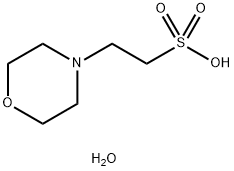What is Good's buffer?
Sep 13,2023
Description
In biological experiments, it is important to keep the pH of the solution. Buffers, mixtures of appropriate weak acids and their conjugate bases, are usually used. Since most biological reactions occur in neutral environments with a pH of 6 to 8, the developed buffers need to be in this range to be applied effectively. In addition, the acids and bases used in the buffer do not produce chelates with metal ions, avoiding effects on biological reactions. For these reasons, Dr. Good developed several aminoethane and aminopropane sulfonic acids that are now widely used for biological research and analysis. Good's buffers have the following features: high water-solubility, low cell membrane permeability, consistent acid-base dissociation constants, low metal chelating capability, high chemical stability, and low absorption spectra in UV and visible regions[1].They selected zwitterions to synthesize the buffer based on the following three points. First of all, the solubility of zwitterion is good. Secondly, the fact that the protonated and unprotonated species are charged makes it difficult for the buffer to cross membranes, although there seem to be exceptions. Thirdly, they chose secondary and tertiary amines to avoid the reactivity problem cited above.
Types of Good's buffers
Good's buffers include PIPES, HEPES, MES, BES, ACES, TES, etc[2]. MES monohydrate, also known as 2-(4-morpholinyl)ethanesulfonic acid hydrate, is a white to pale yellow crystalline powder. Its molecular formula is C6H15NO5S, which is a zwitterionic buffer. MES is a well-performing Good's buffer and is often used as a running buffer for resolving very small proteins[3]. In scientific research, MES monohydrate finds extensive applications, including protein purification, enzyme assays, and cell culture media.

Good's buffers are excellent and widely used in a variety of biological experiments, but there are still problems. For example, The piperazine-based species (PIPES and HEPES) have a rather rich redox chemistry. In particular, Tris buffer is widely used, but it is not a Good's buffer[4]. As scientific research advances, it is possible to continue to develop the buffers with excellent performance. For example, in addition to zwitterions, many organic compounds are also soluble.
References
[1] Pielak G, et al. Buffers, Especially the Good Kind. Biochemistry, 2021; 60: 3436–3440.
[2] Kirsch M, et al. Hydrogen peroxide formation by reaction of peroxynitrite with HEPES and related tertiary amines: Implications for a general mechanism. Journal of Biological Chemistry, 1998; 273: 12716−12724.
[3] Nehme S, et al. Flavin-Conjugated Iron Oxide Nanoparticles as Enzyme-Inspired Photocatalysts for Azo Dye Degradation. Catalysts, 2020; 10: 324
[4] Soares E, et al. Study of the suitability of 2-(N-morpholino) ethanesulfonic acid pH buffer for heavy metals accumulation studies usingSaccharomyces cerevisiae. Environmental Pollutants and Bioavailability, 2000; 12: 59-65.
- Related articles
- Related Qustion
- MES Monohydrate: Diverse Applications and Preparation Method Mar 13, 2024
MES monohydrate is a versatile compound, serving as a stable buffering agent in biological research and a water-soluble catalyst for efficient organic synthesis.
Bemotrizinol is a potent UV filter used in sunscreens. It offers broad-spectrum protection, excellent photostability, and low skin penetration.....
Sep 13,2023API2-Phenoxyethanol is a widely used organic solvent that plays a huge role in industrial production, but it has environmental hazards that cannot be ignored....
Sep 13,2023APIMES monohydrate
145224-94-8You may like
- MES monohydrate
-

- $0.00 / 1KG
- 2025-12-16
- CAS:145224-94-8
- Min. Order: 1KG
- Purity: 99%
- Supply Ability: 3500kg/month
- MES monohydrate
-

- $0.00 / 1G/KG
- 2025-12-15
- CAS:145224-94-8
- Min. Order: 1G/KG
- Purity: 99%
- Supply Ability: 10000000KG
- MES
-

- $0.00 / 25kg
- 2025-12-15
- CAS:145224-94-8
- Min. Order: 1kg
- Purity: 0.99
- Supply Ability: 20MT






